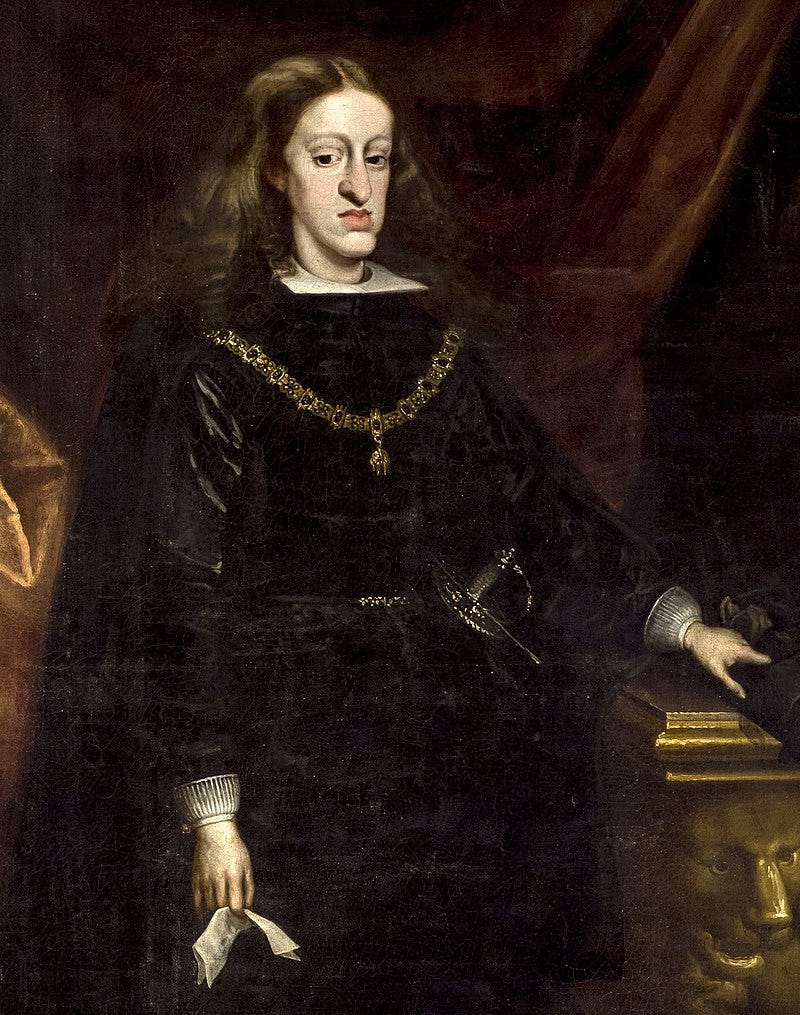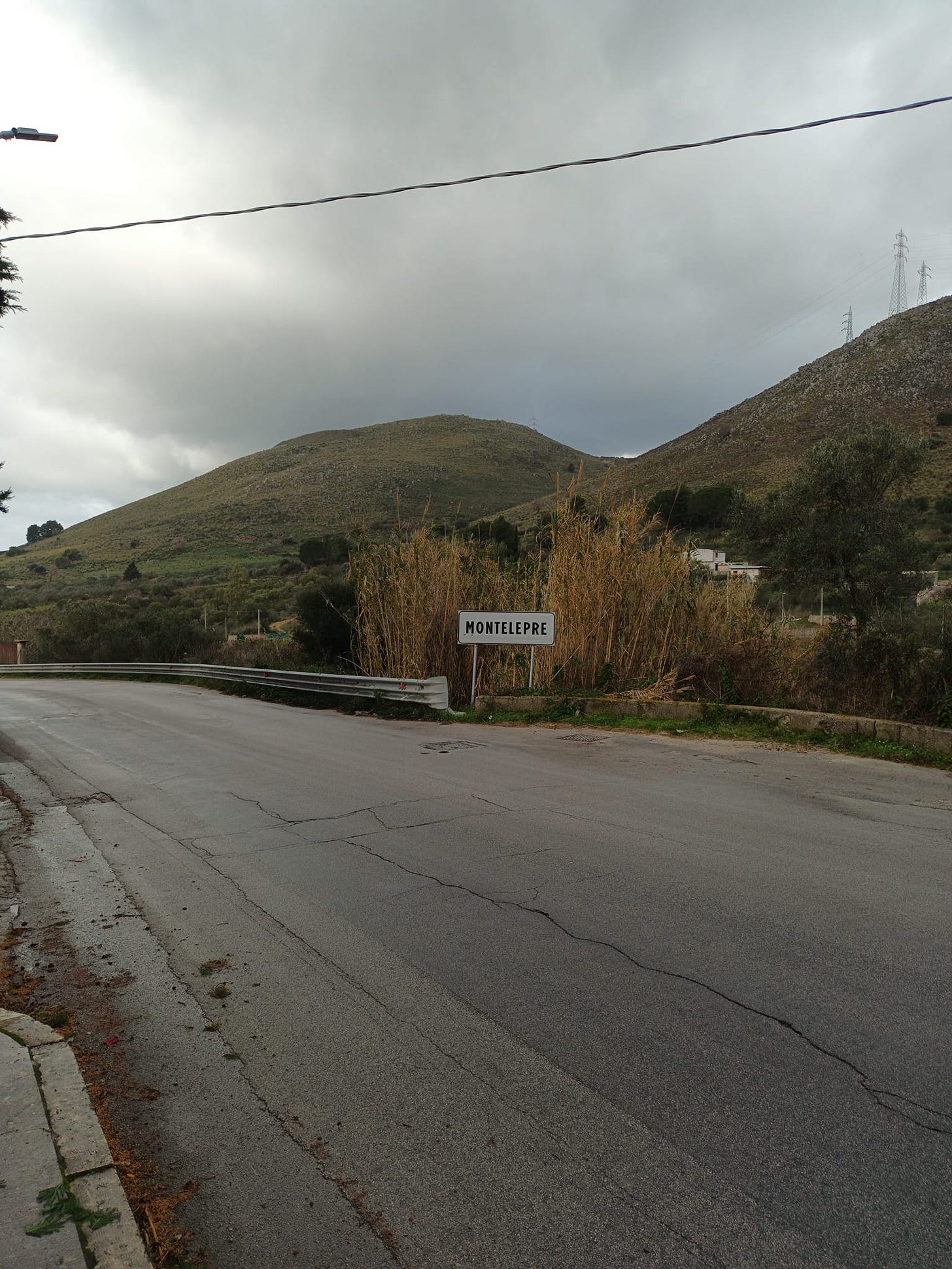Cousin marriage is in the news in Britain, where an MP has introduced a bill in the House of Commons that would ban it. I have been surprised in two ways. The first is by those who support cousin marriage, for a variety of reasons, all rather silly to my mind; and the second surprise is that I had always assumed that the marriage of first cousins was already illegal in the United Kingdom.
Cousin marriage is not allowed in Canon Law, though it can be allowed if a dispensation is applied for. I imagine that such dispensations are rarely given these days. They used to be, as anyone who has studied the royal houses of Europe must know. The result was the extinction of the Spanish branch of the Hapsburgs, and the severe and sad physical disabilities of King Charles II of Spain, Spain’s last Hapsburg monarch. The Hapsburgs were addicted to first cousin marriages and to uncle-niece marriages, in order to keep the family alliance going, but it did not end well.
One thing the snobby English Protestants used to say about the Catholic Maltese was that they were inbred. The Maltese were short, I remember being told, because they were degenerate thanks to inbreeding. Moreover, because there was no primogeniture in Malta, to keep family estates together, people would marry their cousins, which led to the decline into supposed idiocy of the land-owning classes. There is a bit of truth in this, as The Times of Malta admits:
“The 2011 census collected a total of 19,104 surnames. The top 10 are: Borg, Camilleri, Vella, Farrugia, Zammit, Galea, Micallef, Grech, Attard, Spiteri and Azzopardi. And 25 per cent of the population – 99,516 – own just these 10 surnames. A total of 178,018 people – 44 per cent – have surnames which make it to the top 25 list. But here is the stunning news: 76 per cent of the population – 307,886 people – share the same 100 surnames. “This means that three-quarters of the whole population carry the top 100 surnames, while the remaining 23.98 per cent – 97,076 people – share the remaining 12,210 surnames,” Dr Cassar said. This, he said, probably shows a degree of inbreeding. “That is why we suffer from a lot of chronic illnesses – such as diabetes.””
This is, I suppose, to be expected on a small island, though at the same time one needs to remember that numerous Maltese have French, English and Italian surnames, which is evidence of exogamous marriages with foreign settlers.
Needless to say, cousin marriage is not to be encouraged, for medical reasons, among others, but people are drawn into this sort of incest by the desire to keep the clan together - and this is where the Mafia, and in particular the Calabrian ‘Ndrangheta, provide us with contemporary examples. You can trust family in a way that you cannot trust outsiders; marrying the boss’s sister or daughter may be the surest way to promotion in the clan. The boss of bosses, Salvatore Riina, had as his deputy and eventual successor Leoluca Bagarella, to whose sister he was married. The evil Bagarella had a sister married to Giuseppe Marchese, who eventually repented and betrayed his brother-in-law. So, Marchese was the brother-in-law of the brother-in-law of the boss of bosses - a relationship for which no word exists in English, but a relationship that I assume the Mafia takes seriously. Let me try and do a diagram:
Salvatore Riina=Antonia Bagarella - Leoluca Bagarella=Vincenzina Marchese -Giuseppe Marchese.
I hope you have been following so far. If a brother-in-law’s brother-in-law or indeed brother is not a relation in an English sense, so too cousins of cousins and cousins by marriage are hardly relations to our English minds. I have a clear idea of who my cousins’ cousins are, and who my various relations by marriage are, but I have always been interested in genealogy. A well-known film star is my second cousin’s brother-in-law; another second cousin’s cousin is a celebrated society gossip columnist; another cousin’s cousin is a very highly respected Trinidadian novelist; all these people are part of a web of kinship, the sort of thing that the Mafia would recognise. We don’t call these people relations, but ‘connections’ or perhaps relations by marriage, which some would point out are not ‘real’ relations.
In the world of The Chemist of Catania and its sequels, the web of connections is vitally important, and where you come from counts for a great deal. The Chemist himself comes from Catania, but he is originally from Montelepre, and that is at the root of his connection to the Palermo Mafia, also from Montelepre. (In real life, the web of connections was centred on Corleone, Riina’s home town, presciently immortalised by Mario Puzo. If I have an ambition, it is to make Montelepre as famous as Corleone.) Don Calogero marries his sister to don Renzo Santucci, and wants his daughter to marry Beppe Santucci, who is unwilling to accept the client status this would confer. There is competition to marry the sister of his deceased first wife, and the man who does so, Alfio, is only too keen to exploit this tenuous relationship with the boss, and, of course, his children; and his best friend Gino is married to his cousin, and so it goes on. The world of the Mafia is incestuous.
There is also real incest as well. In the second volume, The Nymph of Syracuse, it is revealed that one female character has had an affair with her own nephew, while the Nymph herself has sexual relations with an old man whose son she later marries. Family values, eh? And it will get worse. My current musings centre on the polyphiloprogenitive nature of one boss, don Carmelo of Messina, who has thirteen children by various mothers: what will happen when one of his sons meets, for the very first time, his own half-niece? This is one of the reasons I have been looking things up in Canon Law. If you were a priest, what would you do when a couple that are too closely related present themselves asking to be married? You would of course refuse, but when the boss asks you to make an exception, what then?
On the subject of incest, the best preventative is familiarity. When you are brought up with someone from childhood, and see them every day or every week, then you do not generally fall in love with them. However, if you are not brought up with them, but meet as adults, then falling in love is a danger. One daughter of George III, Princess Sophia, is thought to have had a child with her own brother, the wicked Duke of Cumberland. This is not as shocking as it sounds, as the siblings were not brought up together as children. Again, in Malta, it is common for people to meet their returned immigrant first cousins from Australia in early adulthood, with disastrous consequences. And with Pakistani first cousin marriages, the bride or groom usually comes from a distant land and is a stranger. However, consider the case of a man who has children by various different women, who are brought up in isolation from each other: what happens when they meet for the first time as grown ups?
This plot idea comes straight from the Bible (see 2 Samuel, 13) and the events in the family of King David, where Amnon, the firstborn son, falls in love with his half-sister Tamar. He rapes her, even though Tamar tells him that their father the King would allow their marriage. Tamar’s full brother, Absalom, then gets his revenge by killing Amnon, and flees. It is a good story, and the tragic rape of Tamar is the fons et origo of all the woes that lie ahead for the House of David. The Throne Succession Narrative, as it is called, reads like a novel, and certainly has a novelistic plot with great forward momentum; it is well worth reading, and it is a great source of inspiration to me. And yes, King David’s family accts like a Mafia family, as much as the Julio-Claudians in Robert Graves’ books or the Plantagenets in Shakespeare’s history plays.
The reverse of the incest coin is this: what happens when your most dangerous enemies are in fact your closest relatives?







In looking through early 20th century Colombian Catholic marriage records for my own story via the Church of Latter-Day Saints' familysearch.org (available to anyone), not only were plenty of dispensations given for first cousin marriages (about 5% of all marriages in some rural parishes), but even a fair number of uncle/niece (0.7% in Fresno, Tolima in the 1920s!) and a very few aunt/nephew marriages. In Latin America, the power to give matrimonial dispensations was delegated to the local bishops, likely because of the relatively poor infrastructure and slow communications compared to continental Europe.
Your half-uncle/half-niece couple would still have to get that "difficult" (evidently not so difficult in parts of early 20th century Colombia) dispensation for "first degree with second degree consanguinity" (before the 1983 Code of Canon Law redefined the terms) or "third degree consanguinity" (after 1983) that a full uncle/niece couple would, but it certainly wasn't impossible, especially if there was a "grave" reason (pregnancy and/or openly living together). A suitably generous donation to the local parish, cathedral, or other Church-related charity was often helpful.
Until the 1983 Code of Canon Law, the Church required third cousins and closer to get a dispensation (in reality, there were a lot more dispensations for first cousins and first cousins once removed, because tracing further out was tricky, especially if there was an illegitimate child in there - baptismal records before the 1960s or 70s only had the mother's names if the parents weren't married); that was actually later *softened* to first cousins and closer, making it harder to track second and third cousin marriages.
Now, half-siblings or full siblings - those are categorically not permitted by "natural law" (as opposed to uncle/niece or first cousins, who are barred by "ecclesiastic law," which can be dispensed).
Once in 33 years of priesthood have I been called to assist two first cousins who wished to marry each other. From the research I did at the time, I can tell you that first cousins can legally marry in all of Canada and in about half the states of the USA. Also, Charles Darwin married his first cousin (insert ironic comment here).